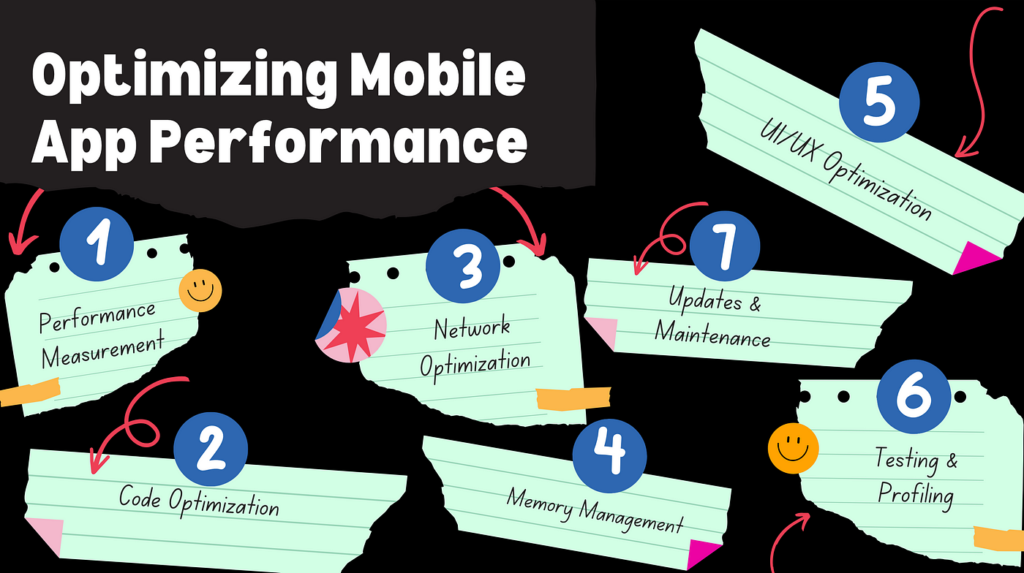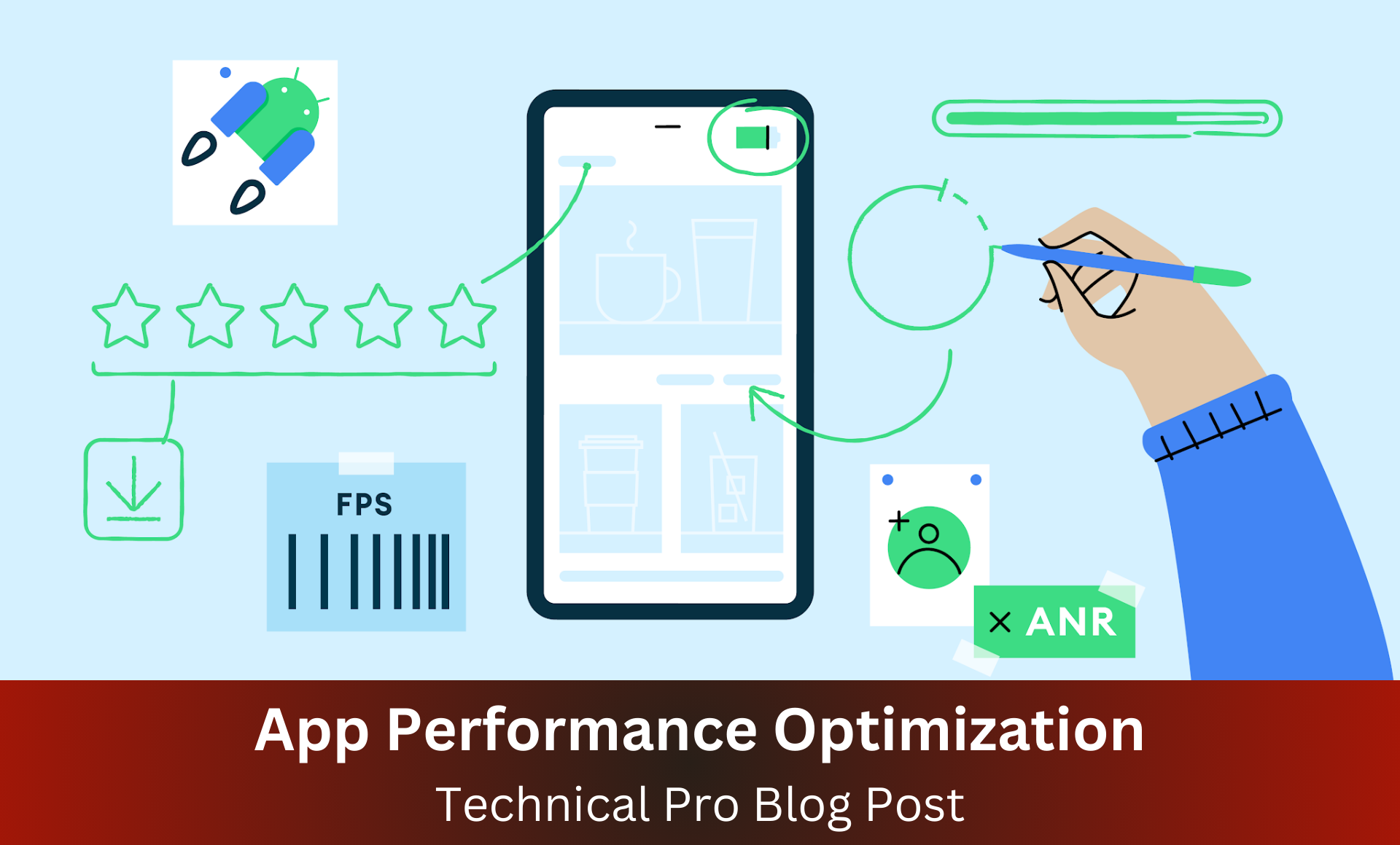Hey there! Do you recall that time you were annoyed by an App Performance and the app crashed or it took a very long time to launch? We’ve all been there. This guide is here to help you make sure your app isn’t one of those cases or, at the very least, isn’t leaving users feeling this way. If you are an app developer or are interested in how to improve your apps’ performance, please, read on: here we provide you with some friendly, concise pieces of advice on how to enhance your app’s performance.
Understanding App Performance
What is App Performance?
An app performance is therefore defined as the measure of how an app functions. Just consider the situation where you are interacting with the particular application that you prefer to use. It is responsive if it opens quickly, is fast to my taps, is glitch-free and doesn’t crash. Key things to keep an eye on include:
- Load Time: Indeed its speed: How fast it loads up to be in a position to serve the users.
- Responsiveness: That is, the app responsiveness; how quickly it reacts when touched or swiped.
- Smoothness: How dynamic even the movements of the different screens and the changes between them are.
- Stability: Frequency of occurrence of the scenarios where the App Performance crashes or freezes.
- Resource Usage: The amount of battery used, CPU consumption and the memory used by theApp Performance.
About App Performance
- User Experience: A user always prefers an app that is fast and does not lag, thus will always be happy and keep on using the app.
- Retention Rates: It was clear seen from here that users are likely to continue using an app that is efficient and not remove it out of exasperation.
- App Store Rankings: Closer to that, improved performance will increase the visibility of your app through the rankings on the app stores thereby more downloads.
- Revenue: If your app has IAPs or display advertisements, the improved performance lets you make more profits.
Key Areas of App Performance Optimization

1. Writing Efficient Code
Effective code is one of the key prerequisites for the successful functioning of the application. Here’s how you can write code that runs like a dream:
Avoiding Memory Leaks
Memory leaks occur when the App Performance constantly utilizes memory that is unnecessary, and as a result slows the application or permanently crashes it. To prevent memory leaks:
- Use Weak References: These assist the system in understanding when it is fit to release the memory and to whom the data should be released to.
- Release Resources: Don’t forget to close the file, database connection and other tools once you have done with it.
- Monitor Memory Usage: There are so many tools in the market that can help you monitor how much memory your App Performance consumes and if there is any that is leaking then you correct it.
Minimizing Object Creation
Generating and removing objects quite often may slow down your App Performance to a degree which you cannot handle. Instead:
- Reuse Objects: people should avoid creating new SCs all the time but should find ways of using the existing SCs.
- Use Object Pools: That is whenever you have things that you often need like views in php or connections to a database, it is recommended to use pools.
2. Managing Data Efficiently
I believe that good data handling is one of the cores to having a fast application. This implies ensuring that Your App Performance communicates appropriately with the database and the internet.
Optimizing Database Access
Database operations can be slow, so:
- Use Indexes: You will find that indexing the columns of the database that you frequently search helps.
- Batch Operations: It is clear that issuing many database operations as one is more efficient than issuing them one by one.
- Load Data Lazily: Always only load data when it is necessary, if not it only adds the unnecessary burden.
Managing Network Requests
Internet connections can be slow or unreliable, so:
- Implement Caching: Download data to lower network traffic so that a user does not have to download data every time.
- Compress Data: One is more likely to download a file of a smaller size as opposed to a larger one, therefore it is true to say that smaller data sizes enable faster downloads.
- Asynchronous Operations: It is favorable to do network stuff in the background so that the application does not hang.
3. Making the User Interface (UI) Smooth
A good UI design is one which adapts with the responsiveness to make the user satisfied. Here’s how to make your UI shine:Here’s how to make your UI shine:
Optimizing UI Rendering
To make your UI render faster:
- Keep Layouts Simple: There is the fact that layouts that contain few elements are faster to render than those, which contain many elements nested into one another.
- Reduce Overdraw: What is overdraw is when the same pixels are draw more than once, this will affect the performance of your machine. Decreasing it makes it faster Depending on the rate at which the fresh produce is delivered, the rate at which it spoils is determined.
- Handle Images Smartly: Pre-load images and make sure they are of correct sizes so that are not causing a delay in your app.
Smooth Animations and Transitions
Good animations added to an application gives it the look and the feel that is polished. To achieve smooth animations:
- Use Hardware Acceleration: It is time to utilize GPU of the target device.
- Optimize Timing: Always choose the correct timing and the duration of the animations in order to have the smooth things.
- Avoid Heavy Lifting During Animations: Some animations take time to load on your device, and if you engage in any mathematical computation at this time, your animation will freeze.
4. Testing and Profiling
Hence, testing your app and profiling are some of the most vital procedures when it comes to ensuring that your app is fast.
Automated Testing
Automated tests helps to found out the issues at the earliest. Types of automated tests include:
- Unit Tests: For the first benefit, it is suggested to test small pieces of code to ensure all of them run successfully.
- Integration Tests: Make sure that one part of your app will complement the other parts without having problems.
- Performance Tests: One should also see the behavior of your app in certain conditions.
Profiling Tools
The profiling tools aid one to know how the app is resourceful within the system. Key tools include:
- CPU Profiler: Enables one to know which sections of the code use most CPU.
- Memory Profiler: Checks on the amount of memory being used to note if there is a leakage or high usage.
- Network Profiler: Indicates how many units of data is taken by the app and sent to other parties.
Advanced Performance Optimization Techniques
1. Multi-threading and Asynchronous Programming
General activities that can be executed in the background will take very little time and, therefore, would not hinder the speed of your application.
Multi-threading
Multi-threading therefore is doing many things simultaneously. Key points include:
- Manage Threads Carefully: In managing threads there are several issues such as starting, stopping and syncing among others which should be handled properly to avoid oddities like deadlock.
- Prioritize Tasks: He carried out the most important actions first in order not to slow down the work of the application.
Asynchronous Programming
Asynchronous programming allows a process to proceed or run without having to wait for the occurrence of another process. Techniques include:
- Async/Await: This makes asynchronous code easy to comprehend and code as well I might add.
- Callbacks: Execute certain code when an async task has completed its execution.
- Promises/Futures: It solves the issue with handling of async results and also has the functionality of chaining related tasks.
2. Caching Strategies
Caching is a valuable feature that makes it possible to store data in tools and increase your app’s speed.
Types of Caching
- In-Memory Caching: It will help to store data in memory, where this or that information will be given in order to quickly find it and use it.
- Disk Caching: Store the data on the device storage so that the data is available in the subsequent sessions.
- Network Caching: A network response is used to retain answers to prevent making repeated requests on a network.
Implementing Caching
- Cache Invalidation: Cache up to date by using expiration of the cached data.
- Manage Cache Size: Some of the strategies to apply in order to control for the size of the cache include LRU among others.
3. Load Balancing and Scaling
For the native apps with the backend services availability, load and scale can always balance and handle peak loads.
Load Balancing
Distribute large amounts of incoming traffic across the multiple servers to stop arranging overload. Techniques include:
- Round Robin: Requests are distributed in circles around the layout.
- Least Connections: Selects server connection in a way that send requests to the server with less number of connections.
- IP Hash: Selects client IP addresses to distribute the given requests to.
Scaling
Dynamically manage the usage of servers depending on the flow. Strategies include:
- Vertical Scaling: Controllers can also inform users that more resources can be added to the servers that are already existing.
- Horizontal Scaling: Increase the numbers of servers to cater for the lean traffic.
How Can Performance Be Continuously Improved?
1. Regular Monitoring and Maintenance
Monitoring the health of your app allows to detect problematic signs on time.
Monitoring Tools
- Analytics Tools: Examples include google analytics or firebase, which monitor such KPIs and user interactions.
- Crash Reporting Tools: Other tools such as using Crashlytics can inform us of such issues and the causes behind it.
Maintenance Activities
- Code Refactoring: Pick up the mess and enhance it from time to time.
- Dependency Updates: Update the libraries and frameworks being used most so that there is efficient work and security is not compromised on.
2. Collecting the Preferences and Continuous Updates
One must say that users’ opinion is pure gold when it comes to identifying and resolving performance problems.
Collecting Feedback
- In-App Surveys: Using pop-up messages, it is possible to inquire from the users about their experience in the application directly.
- App Store Reviews: To attend to the needs of the users, read and reply to the reviews provided where one can deduce users’ complaints.
- Customer Support: Support interactions should be used to seek for performance feedbacks.
Implementing Improvements
- Prioritize Issues: Highlight the best giant solutions for the trouble.
- Iterative Approach: Maximize change gradually and track if there are signs of further enhancement on workforce performance.
Conclusion
All in all, it can be said that the optimization of the app is an unending process, but it would be worth it. Writing tight code, mastering data handling, keeping UI fluent, testing and profiling, as well as paying attention to the users’ feedback, an app can be invented and developed to meet and even surpass the users’ expectations. Happy optimizing!
